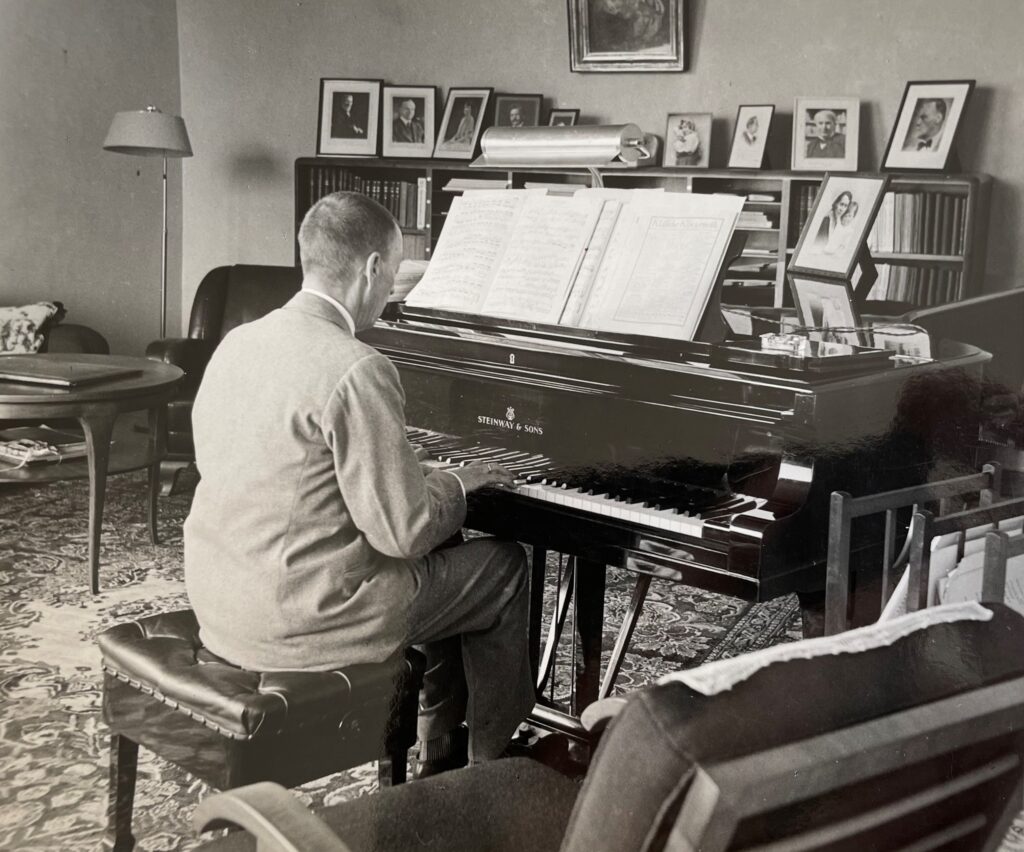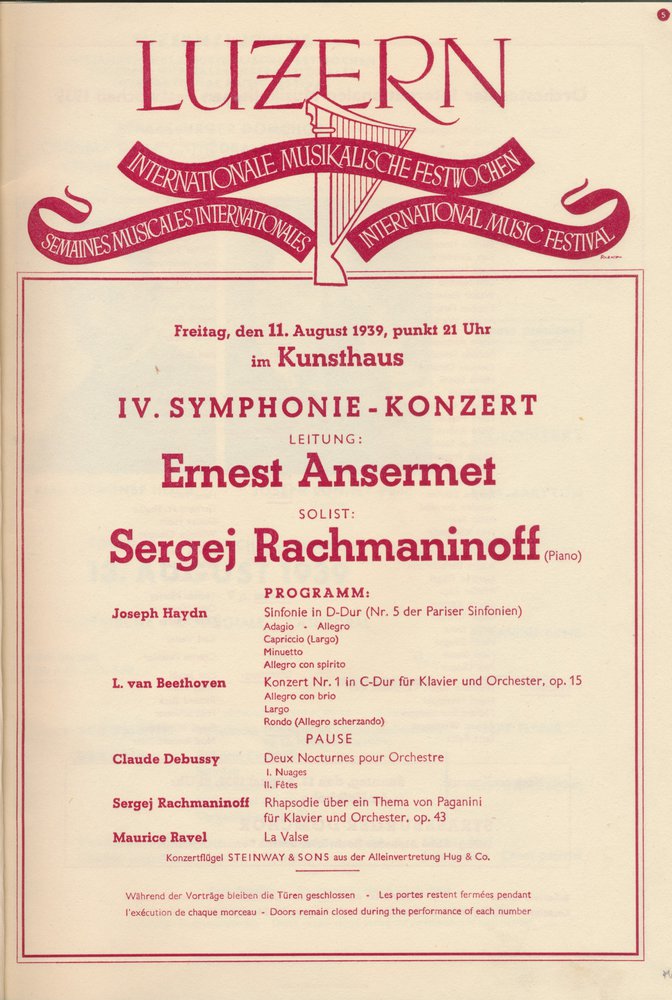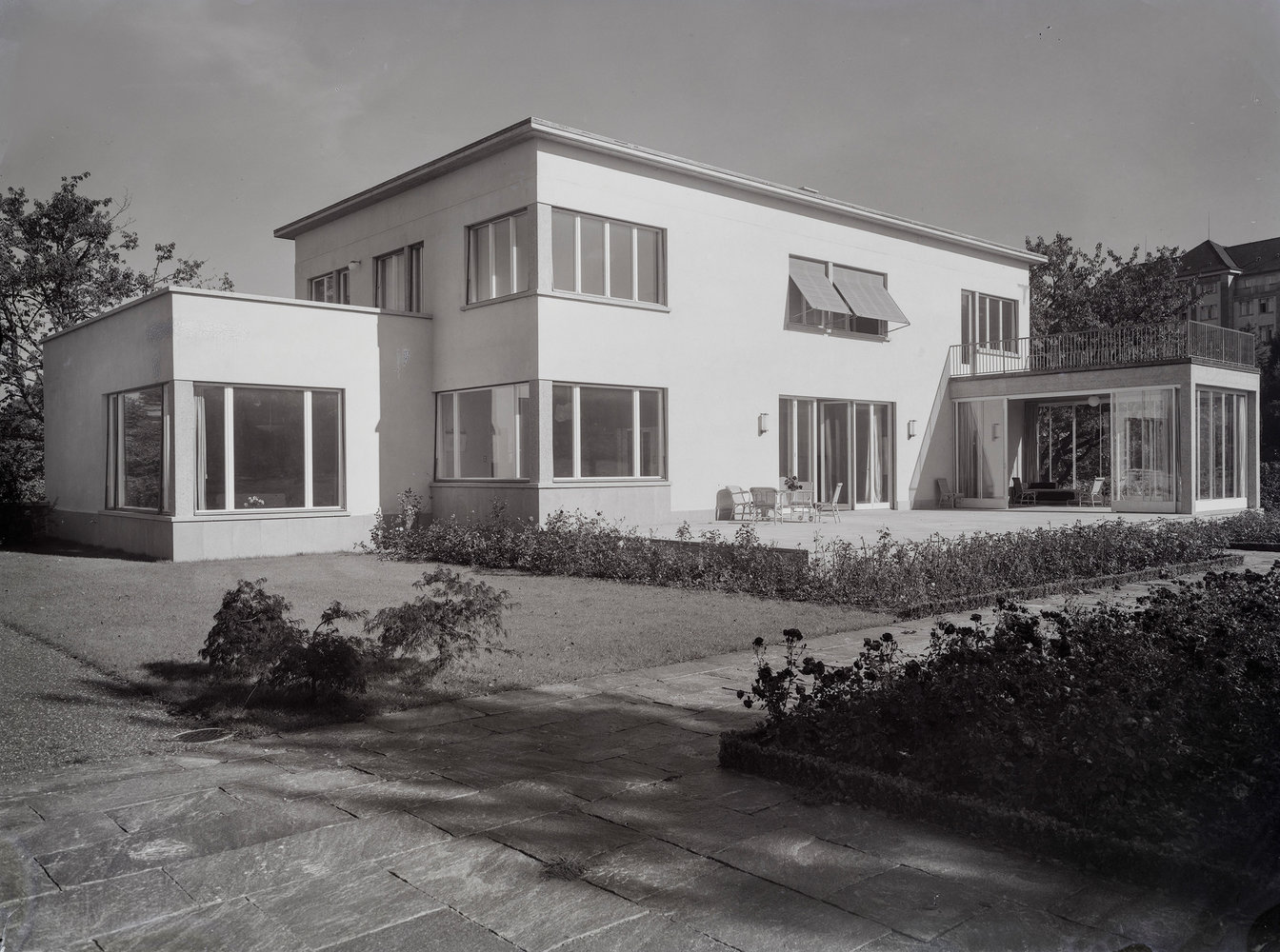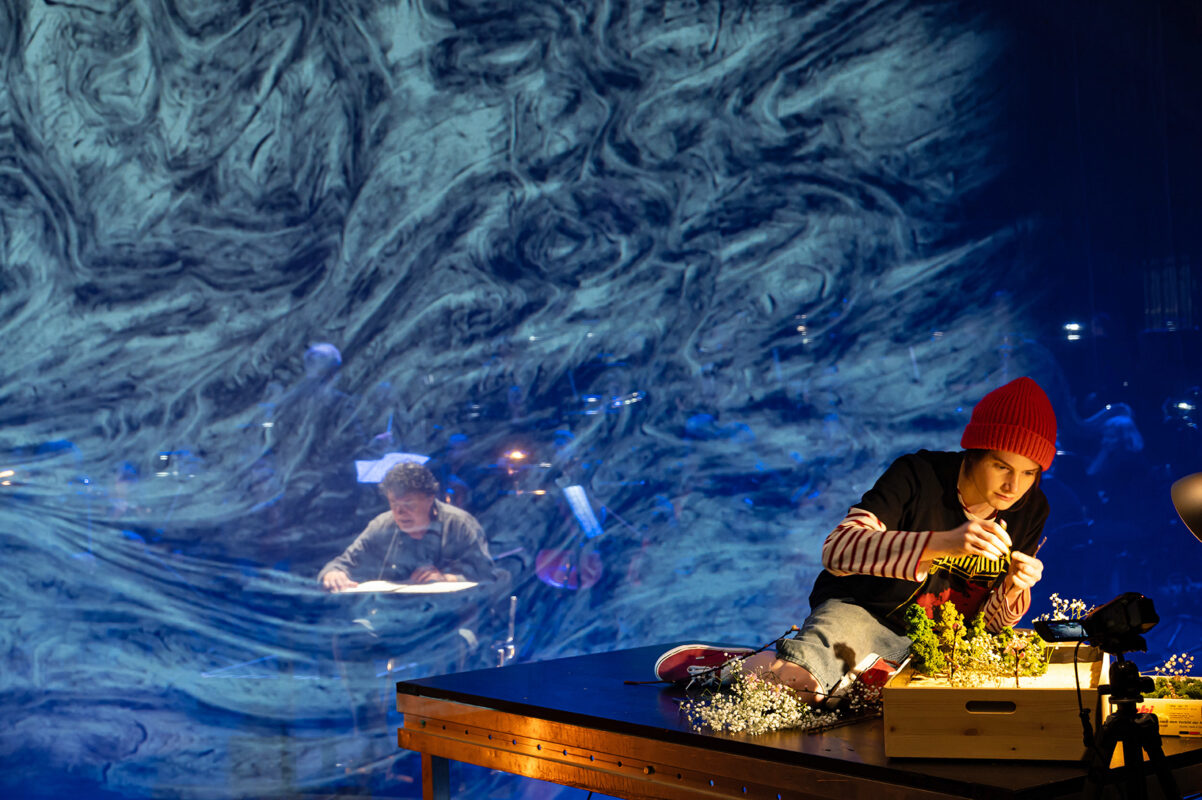Rachmaninov in Lucerne
In the 1930s, the much-traveled pianist, composer and conductor Sergei Rachmaninov found peace and relaxation in Hertenstein for a while. With a special exhibition, the Hans-Erni-Museum offers the opportunity to get closer to the artist and his time.

The good thing about anniversaries is that something gets moving again. Villa Senar, a stately Bauhaus-style building in the middle of a large park in Hertenstein, was privately owned until recently. Since April 2022, the property has belonged to the canton of Lucerne. Following extensive renovation work, it is temporarily open to the public to mark the 150th anniversary of the birth of Rachmaninoff (1873-1943). The Serge Rachmaninoff Foundation looks after the house and organizes events in Switzerland and abroad.
In this context, the estate was also handed over to the Lucerne State Archives, making Lucerne a focal point for Rachmaninov researchers. Organizing and digitizing it is a time-consuming task, which the State Archives are taking care of in exemplary fashion. An exhibition currently on show at the Hans Erni Museum provides an insight into this impressive legacy.
Suitcases, gardening clothes and photos
The Hans-Erni-Museum is located on the grounds of the Swiss Museum of Transport in Lucerne. The special exhibition on Sergei Rachmaninov is located on the top floor of the imposing circular building. From a distance, you can see a large display case containing one of the virtuoso's suitcases and his original clothes, which he liked to wear when gardening. Rachmaninov lived in Hertenstein from 1932 to 1939; Villa Senar was his retreat from his strenuous concert tours, where he could also compose in peace. The exhibition focuses on this period.
Heinz Stahlhut, the director of the Hans-Erni-Museum, curated it. He has dedicated an extensive chapter to Lucerne and Hertenstein in the 1930s. Loans from the Swiss Museum of Transport, the Weggis Regional Museum and private collections show how attractive Hertenstein was for international tourism at the time. Another chapter focuses on the architecture, planning and construction of Villa Senar by Alfred Möri and Karl Friedrich Krebs. Floor plans, documents and photos provide an insight into the work of these progressive Lucerne architects, who also built St. Luke's Church in 1933/35.

Rachmaninov toured primarily as a virtuoso, even during his time in Hertenstein. Concert programs and posters from all over the world can be seen in the exhibition, especially from Carnegie Hall New York and Paris. Rachmaninov's only appearance at the Lucerne International Music Festival is also included. On August 11, 1939, he played Beethoven's Piano Concerto No. 1 in C major under the direction of Ernest Ansermet, and his own Rhapsodie sur un thème de Paganini for piano and orchestra op. 43.
In this exhibition, it is above all the beautifully presented historical photos of Rachmaninov that attract attention. You can see him either at work on the piano or in private. Also eye-catching are the numerous editions, including Russian ones, of Rachmaninov's most popular piano piece, the Prelude C sharp minor op. 3 No. 2 from the documentation library of Walter Labhart. Old shellac records bear witness to a different era of recording technology.
Variations, essays and events
When Rachmaninov came to Lucerne, he was in a creative crisis. Only after a long break full of artistic self-doubt did he regain his creativity. In Hertenstein, he wrote the Variations sur un thème de Corelli op. 42, the Paganini Rhapsody and his Third Symphony op. 44. In addition to interesting editions of these works, the conducting score of the Paganini Rhapsody by the renowned conductor Willem Mengelberg is also on display, complete with his entries. All three works can also be heard in the Erni Museum.
A catalog accompanying the exhibition takes an essayistic look at Rachmaninov's time in Lucerne. In it, Karl Bühlmann Insights into Lucerne's artistic life in the thirties, Elger Nies carries Indian summer on Lake Lucerne and Graziella Contratto makes a An attempt at great happiness, Rachmaninov's music and the lake. It is richly illustrated and includes a biography, a bibliography and a list of works.

Museum of Transport Lucerne, Hans-Erni-Museumuntil January 14, 2024.
The catalog is also available digitally: heinz.stahlhut@verkehrshaus.ch
23. 11. 2023, 6 pm: Exhibition talk on Villa Senar
14. 1. 2023, 2 pm: Finissage concert with the Corelli Variations (Tommaso Carlini)
Serge Rachmaninoff Foundation: https://rachmaninoff.ch







